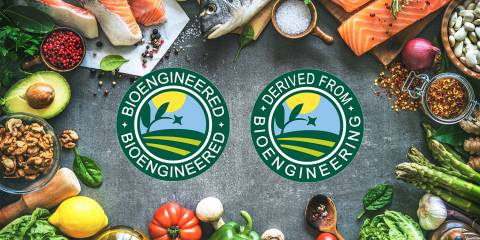Common Questions About Non-GMO Food
Are my kids eating genetically engineered food?
The sad truth is many of the foods that are most popular with children contain GMOs. Cereals, snack bars, snack boxes, cookies, processed lunch meats, and crackers all contain large amounts of high risk food ingredients. In North America, over 80% of our food contains GMO's. If you are not buying foods that are Non-GMO Project Verified, most likely GMOs are present at breakfast, lunch, and dinner.
What if I only buy organic?
Shopping organic is a great step towards ensuring that your family eats the healthiest foods possible. The challenge is that although GMOs are an excluded method under the National Organic Program, organic certification does not require GMO testing. Choosing products that are Certified Organic AND Non-GMO Project Verified is the best way to make sure you are getting the safest, healthiest, highest-quality foo for your family.
What are the most common GMOs?
The most common GMOs are soy, cotton, canola, corn, sugar beets, Hawaiian papaya, alfalfa, and squash (zucchini and yellow). Many of these items appear as added ingredients in a large amount of the foods we eat. For instance, your family may not eat tofu or drink soy milk, but soy is most likely present in a large percentage of the foods in your pantry.
GMOs may be hidden in common processed food ingredients such as: Amino Acids, Aspartame, Ascorbic Acid, Sodium Ascorbate, Vitamin C, Citric Acid, Sodium Citrate, Flavorings (“natural” and “artificial”), High Fructose Corn Syrup, Hydrolyzed Vegetable Protein, Lactic Acid, Maltodextrins, Molasses, Monosodium Glutamate, Sucrose, Textured Vegetable Protein (TVP), Xanthan Gum, Vitamins, Yeast Products.
Did you know?
The produce stickers with the PLU codes can tell you how that food was produced!
- Conventional produce codes are a four-digit number
- Organic produce codes are a five-digit number that starts with 9.
- Genetically modified produce are also a five-digit code, but it starts with 8.




